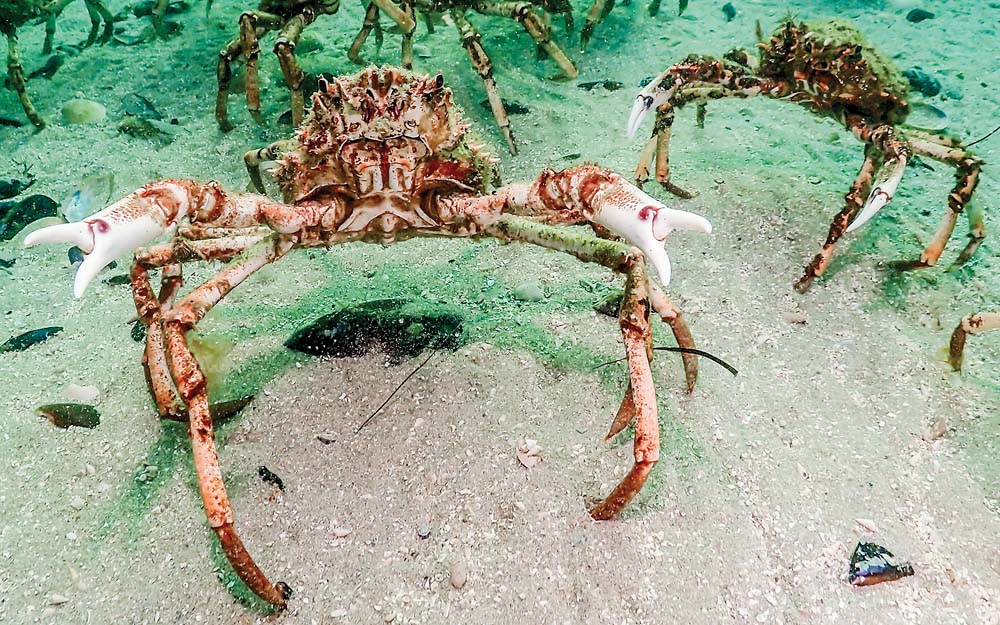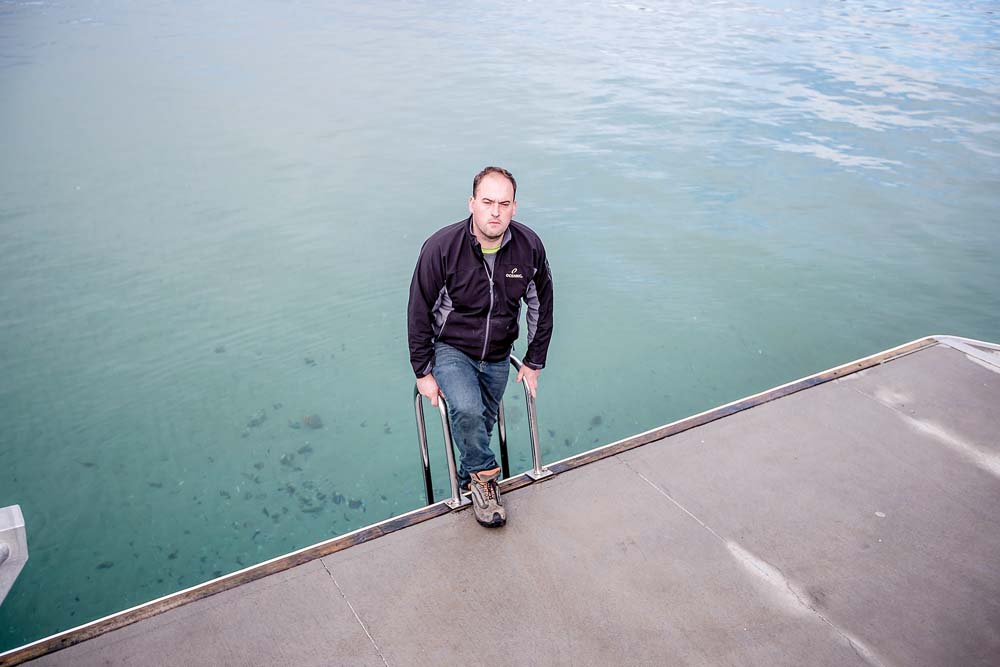
DAY trippers using nets and buckets are reportedly over-fishing moulting spider crabs in the shallows at Blairgowrie.
So many of the large crabs – particularly vulnerable when shedding their old shells – are being taken that some locals fear their numbers are bound to plummet.
The plunder echoes that of pipis at Venus Bay, where day trippers flout the one-bucket-a-family rule as they scour the sand at low tide for the shellfish – alarming locals and environmentalists.
Up to 100,000 spider crabs make their annual migration into Port Phillip on the first full moon of winter (Monday 17 June this year) to moult.
Stingrays, seals and seabirds feast on the fist-sized crabs.
But, while the phenomenon has occurred since time immemorial, a new predator could be about to upset nature’s delicate balance.
Diver and photographer Dave Baxter, and Xtreme Watersports proprietor Steve Dale, say people armed with crab nets and buckets are pouncing on the crabs as they shuffle about the sea floor waiting for their new shells to harden.

“It’s become a major conservation issue of late,” Mr Baxter said.
“The crabs come close to shore in their thousands and sit for an hour in the shallows while they shed and, in that time, the stingrays come in and hoover up those with soft shells and the birds pick them off.
“Taking the crabs hasn’t been an issue before and the bag limit is 30 per person but now, with so many people using nets, we think about 2000 were taken last week.”
The penalty for exceeding the bag limit is a $484 on-the-spot fine.
Chicken carcases are being used to entice the crabs to their nets and simply hauling them in.
The men want a ban on catching the crabs during their May-August moulting period to keep the species sustainable.
“While it is legal to take them, we believe they are being decimated during the only time they come into the bay,” Mr Dale said.
“Their population balance is being upset.”
Parks Victoria chief conservation scientist Dr Mark Norman said the crabs migrated once a year from around and outside The Heads to the shallows somewhere between Safety Beach and Sorrento.
They congregate in an area up to the size of a football field, visible from above as a large dark area on the bottom. This year many gathered at Blairgowrie.
Dr Norman said the crabs can only grow by shedding their hard armour, inflating with water to make a bigger suit of armour, letting it harden and then growing into the new big suit over the following year.
“Once in big masses, something triggers all the crabs to start pinching an eye tip, which is an optic nerve stimulus to commence moulting,” he said. “Within a day or two all the crabs in the swarm will moult at the same time. This is all about safety in numbers and swamping predators with far too much to eat – like the benefits of fish in schools or birds in big flocks.”
Dr Norman said Mornington Peninsula residents were “blessed to have such an amazing event on our doorstep”.
“Film crews have come from around the world to film and sing its praises, including the BBC’s Blue Planet II.”
Victorian Fisheries Authority fisheries management and science director Dallas D’Silva said there was no regulated “season” for catching the crabs. He said they were “highly sought after among the multi-cultural community for soup”.
“Spider crabs can be fished all year however, recreational fishing is highly seasonal due to their movements,” he said.
“Our fisheries officers are closely monitoring fishing activity and making sure people are staying within the bag limits,” Mr D’Silva said. “Compliance with the regulations is high.
“We are also looking at options to do further research on the life cycle and movements of spider crabs.”
First published in the Southern Peninsula News – 25 June 2019



